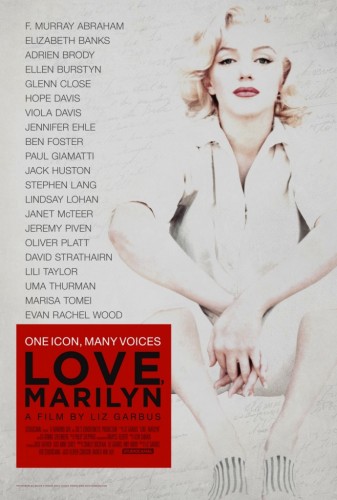
Written by Rachael Johnson
Directed by Liz Garbus, Love, Marilyn is a 2012 documentary about the most iconic female American star of the twentieth century, Marilyn Monroe. The film mixes archival footage, photographs and movie clips with contemporary commentary by biographers and historians as well as old interviews with those who knew the actress. It also features dramatic readings by present-day actors of Monroe’s own words and quotes by deceased writers and directors. In her opening, Garbus anticipates the accusation of over-saturation by acknowledging that the star has, in truth, been one of the most scrutinized figures in pop culture. We are told that there have been over a thousand books written about her. Love, Marilyn, though, hopes to be fresh and different as one of its sources is a trove of recently discovered writing by the star herself. Garbus promises, “Marilyn’s own voice adds new layers to the mystery.”
True to its tagline–“One Icon, Many Voices”–Love, Marilyn employs a number of actresses of all ages to read Monroe’s reflections. They include the likes of Glenn Close, Uma Thurman, Lili Taylor, Lindsay Lohan, Marisa Tomei, Evan Rachel Wood and Viola Davis. I understand the point. While attempting to shine a light on the many parts of Monroe, the director is, also, it seems, trying to suggest a kind of ancestral kinship between the women. This is quite a moving idea when you think about it. Unfortunately, what is a potentially interesting, affecting device rapidly becomes a really irritating gimmick. Far too many actresses seem to hover across the screen to give readings and I am very sorry to say that the vast majority of the performances are just too self-conscious and overstated. Of course, the actors who give voice to Monroe’s deceased male biographers and the men who knew her fare no better with this approach. The dramatic readings are simply distracting. Only Viola Davis and Adrien Brody (as Truman Capote) give half-decent deliveries. It is a shame because there are some fine talents involved.
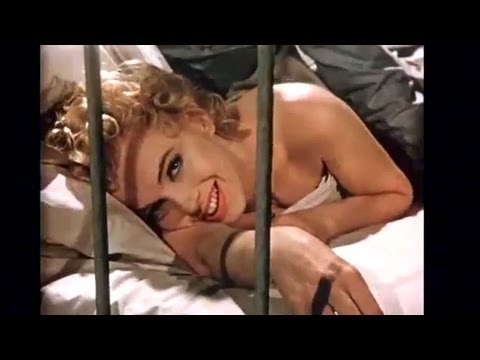
It is even more disappointing because the artificial readings quite often obscure the absorbing and constructive elements of the documentary. Love, Marilyn features interesting commentary by Monroe biographers and film historians in addition to fascinating footage of old television interviews with the actress. Most importantly, it acknowledges her heartbreaking victimization while also recognizing her achievements and great cultural significance. Monroe should not be dismissed as a passive sex object or “bimbo.” When she was focused and healthy, she was a dynamic, engaged subject as both an actor and woman. Although it naturally addresses the darkness–the exploitation, pills, mental illness and fatal overdose–the documentary crucially highlights her creativity and ambitious, competitive nature. From the very start, it makes it clear that the young Marilyn was extremely industrious and entirely dedicated to improving her acting skills. She also looked after her interests and demonstrated uncommon initiative. Tired of being underappreciated and underpaid by the studio, and fed up with lack of creative control and worn-out roles, she walked out of her contract at Twentieth Century Fox in 1954 and escaped to New York.
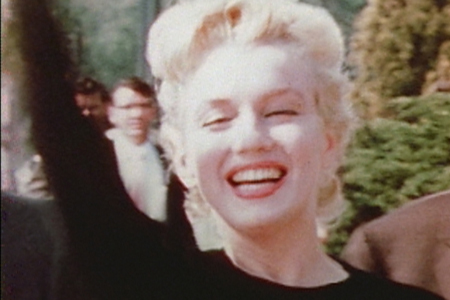
The documentary underscores that Monroe’s break for independence was exceptional for a Hollywood star. Her personal revolt paid off when the studio eventually asked her to return. She got what she wanted–director approval included. Love, Marilyn also relates that Monroe launched her own production company with photographer Milton Greene, Marilyn Monroe Productions, when she went out on her own. This is an invaluable reminder for audiences. There are still too many film lovers who are unaware of this extraordinary, inspiring fact.
In New York, Monroe also began to concentrate on her craft. She took classes at the Actors Studio and befriended the legendary Lee Strasberg. In an old interview with the acting teacher, he praises Marilyn’s gifts: “She was one of the two or three most sensitive and talented people I’ve seen in my life.” Love, Marilyn points out her professional insecurities but also exhibits her gifts. There is a great clip shown of Monroe and Laurence Olivier in The Prince and the Showgirl (1957). As biographer Donald Spotto remarks, the actress simply out-performs her illustrious co-star on the big screen.
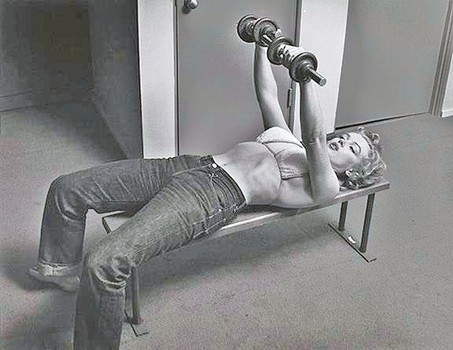
Love, Marilyn also, importantly, demolishes long-held beliefs that the sex symbol Monroe was solely manufactured by the studio. Ellen Burstyn, a former Actors Studio member, observes, “Marilyn created that wonderful character, Marilyn Monroe.” Vividly illustrating how she invented her own walk, she argues that it was the actress herself who fashioned her very own star persona. Love, Marilyn also acknowledges Monroe’s love of literature as well as her respect for ideas and intellectuals. It was during this period that she met her future husband, playwright Arthur Miller. The documentary also importantly points out that Monroe was ahead of her time regarding the question of marriage and career. Fascinating interviews with the actress shortly after her marriage to Miller reveal that she had absolutely no intention of giving up her career or slowing down. It is said that this was, in fact, one of the main reasons her marriage to the patriarchal ex-baseball player, Joe DiMaggio broke down. Monroe’s attitudes are all the more unusual in what is generally acknowledged as a backward decade for American women.
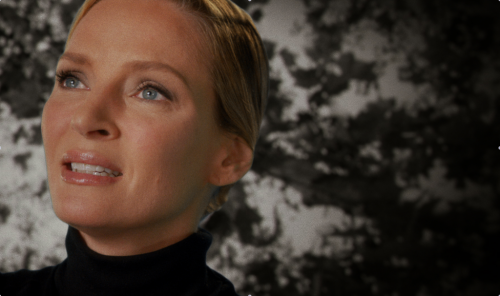
Although it recognizes her enlightened attitudes and interest in ideas, Love, Marilyn does not, unfortunately, address Monroe’s specific ideological beliefs. The actress was, it seems, to the left of the political spectrum and impressively forward-thinking. It shows that she supported Arthur Miller when he was forced to testify before the chillingly repressive McCarthy hearings that he had no Communist affiliations but it does not explore her remarkable connections with left-wing activists, respect for working people and progressive sympathies. She actively championed the career of Ella Fitzgerald and advocated interracial harmony. As the great singer herself said, “She was an unusual woman, a little ahead of her times. And she didn’t know it.” This is a missed opportunity by the filmmaker. Monroe’s principles constitute a powerful rebuke to those who seek to simplify her as a sex object. Her support for Fitzgerald also shows that this so-called “man’s woman” was capable of sisterly solidarity.
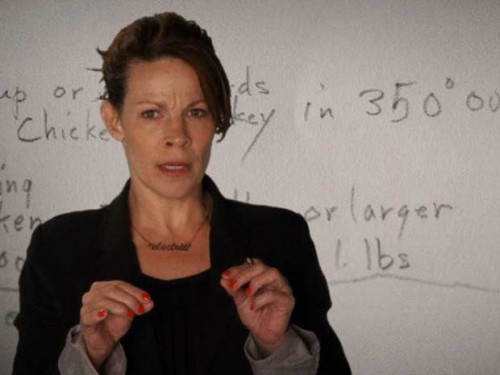
There is, of course, a darker side to Monroe’s life. Tragically, there is little doubt that she suffered sexual exploitation in Hollywood. She was also objectified on the screen. Love, Marilyn explains that this was particularly the case in the early part of her career. Head of Twentieth Century Fox, Darryl Zanuck, it is said, hated Monroe and gave her a string of offensive, one-dimensional sex object roles. This was, of course, the main reason why she quit Fox. The documentary also suggests that Monroe was both a victim of the casting couch and a cog in the Hollywood machine. Monroe was a casualty of the deeply conservative patriarchal time and place that was America in the ’50s.
This understanding should not, nevertheless, obscure the fact that there was another Marilyn who somehow survived her hellish youth to love and desire others. As a 1962 Life Magazine interview with Richard Meryman reveals, Monroe was not ashamed of her sexuality: “We are all sexual creatures, thank God, but it’s a pity so many people despise and crush this natural gift” (Life Magazine, Aug. 17, 1962). Monroe, in fact, enjoyed expressing herself sexually. To see her as an eternal victim is to rob her of her own sexuality. Monroe embraced her sexual subjectivity; she did not want to be a sexual object. In fact, she told Meryman, “I just hate to be a thing.” Of course, female sexuality is simultaneously denied, contained, controlled and exploited in a misogynistic society. The star was, at once, punished for her sexuality and reduced to being a sexual object. I think, with Monroe, we should not reproduce those objectifying, effectively dehumanizing tendencies in our understanding of her sexuality.
Love, Marilyn rightly shows that the actress was not frightened of expressing–and displaying–herself sexually. When it was discovered in 1952 that Monroe did a nude calendar a few years earlier, the scandal threatened to destroy her career. But the star was defiant: “I will not be punished for it, or not be loved, or be afraid of my genitals being exposed, known and seen. So what?” Thankfully for the star, the scandal catapulted her to fame. Film historian Thomas Schatz boldly proposes that Monroe was a sexual pioneer: “The world was ready for that. Obviously, the sexual mores are changing and she is at the vanguard of that. She’s anticipating a sexual revolution that many people associate with Betty Friedan, etc, a decade later, that would not have happened without Marilyn Monroe.” There is an amusing anecdote related by Amy Greene, Monroe’s friend and wife of Milton Greene, that reveals the sex symbol as a sexual subject. When questioned about the unlikely pairing between the actress and DiMaggio, Monroe simply responded, “He’s terrific in bed.” The sexual politics surrounding the star could, nevertheless, have been explored in greater depth. It would be have been interesting to examine both male and female attitudes towards Monroe as well as her attitudes towards her own sex.
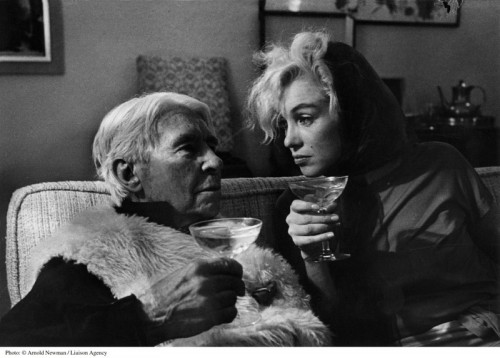
Love, Marilyn does not shy away from the depressing aspects of Monroe’s life and rightly recognizes that she was victimized personally and professionally. It examines her ultimately troubled marriages to Joe DiMaggio and Arthur Miller, addiction to pills, miscarriages and ill health, as well as her final disputes with the studio. It contends that both husbands ill-treated her: DiMaggio was violently possessive while Miller belittled her intelligence and career in his writing. Towards the end of her life, Monroe also suffered ruinous problems in her work. Love, Marilyn, it must be said, is a sympathetic rather than sychophantic portrait. It does give voice to directors like George Cukor who accused Monroe of a gross lack of professionalism. But it also suggests that the actress was used as a scapegoat for the sins of others.
All in all, Love, Marilyn is formally flawed but certainly interesting and significant. Drawing on a variety of sources, it presents important arguments. As Garbus highlights Monroe’s achievements and cultural contribution, it cannot be said to just be another miserabilist take on the icon. All the same, a more focused, unhurried approach would have been more helpful and the arguments could have been developed further. I would personally like to have spent more time with the biographers and film historians interviewed. Hopefully, however, Love, Marilyn, will encourage viewers to review, or discover, the star’s performances and read more about her life and career. The more you learn about Monroe, the more fascinating she becomes. There is the sadness–the abuse, exploitation, and deep psychological suffering–but there is also the originality, self-invention, ambition, intellectual curiosity, empathy and sexuality. I also hope that Love, Marilyn will inspire documentarians out there–particularly feminist filmmakers–to explore the complexities of this most enduring, ground-breaking star.